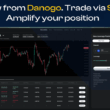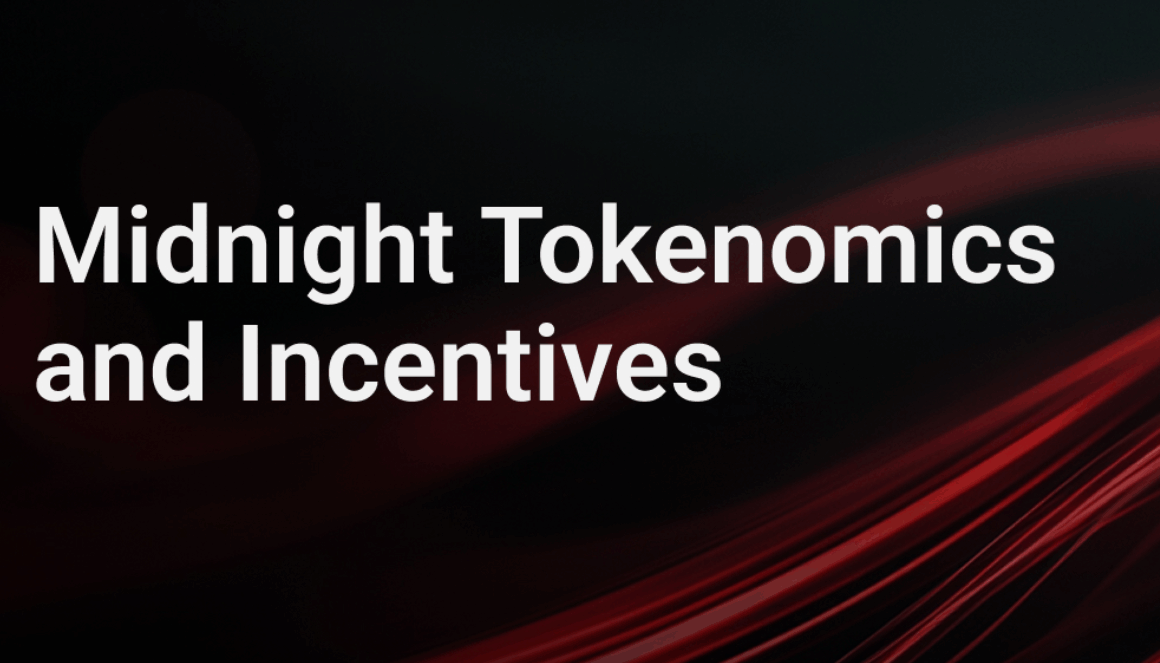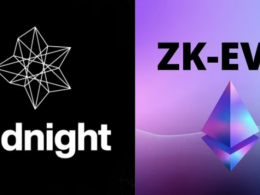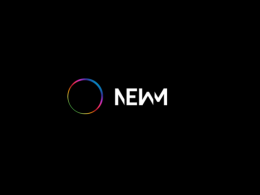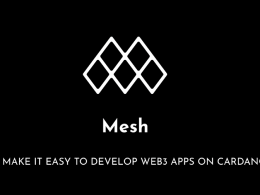In our previous article, The Glacier Drop: Midnight’s Privacy Revolution and its Impact on Cardano, we explored how Midnight introduces a unique approach to token distribution and privacy in the Cardano ecosystem. In this article, we’ll take a closer look into the mechanics of the Glacier Drop, the innovative tokenomics model behind $NIGHT, and how Midnight is set to reshape Web3 while enhancing sustainability and fairness. With the recent release of the Midnight tokenomics and incentives whitepaper, alongside buzzing community discussions, we’ll uncover what you need to know about this privacy revolution and what it means for Cardano and beyond.
The Mechanics of the Glacier Drop: A Fair and Shielded Distribution
The Glacier Drop is a three-phase, 60-day token distribution event designed to allocate 100% of the 24 billion $NIGHT tokens to users across eight major blockchains: Cardano, Bitcoin, Ethereum, Solana, XRP Ledger, BNB Chain, Avalanche, and Basic Attention Token (BAT) ecosystems. Unlike traditional airdrops that often favor early adopters or whales, Midnight’s approach prioritizes accessibility and fairness, with built-in protections against volatility and Sybil attacks.
Phase 1: Snapshot and Eligibility
The Glacier Drop begins with a snapshot-based eligibility model. Wallets holding at least $100 worth of supported assets ($ADA, $BTC, $ETH, $SOL, $XRP, $BNB, $AVAX, or $BAT) at the time of the snapshot qualify for $NIGHT tokens. Notably, Cardano $ADA holders are allocated 50% of the total Glacier Drop tokens, reflecting Midnight’s deep integration with the Cardano ecosystem. This phase ensures broad participation, rewarding long-term holders across multiple chains while maintaining a low entry barrier.To prevent gaming the system, Midnight employs anti-Sybil measures, such as on-chain activity analysis and wallet behavior checks, ensuring that only genuine users benefit. The whitepaper emphasizes that this phase, lasting approximately 20 days, is designed to be “radically accessible,” allowing even small retail investors to participate.
Phase 2: Claiming with Hydra-Powered Efficiency
The second phase introduces Midnight’s innovative use of Cardano’s Hydra protocol for token claiming. Hydra, known for processing over 14 billion transactions and achieving 1,000,000+ transactions per second (TPS) during the Hydra Doom tournament, ensures that the Glacier Drop can handle massive scale without congestion. Claimed $NIGHT tokens are distributed via smart contracts, with redemption logic recorded on Bitcoin as an Ordinal or Rune for transparent verification. This cross-chain synergy between Cardano’s scalability and Bitcoin’s immutability showcases Midnight’s technical prowess. Participants have 60 days to claim their tokens, but unclaimed $NIGHT remains available for four years, reducing pressure and ensuring inclusivity for latecomers. This extended window addresses common airdrop pitfalls, where rushed claims lead to network congestion or missed opportunities.
Phase 3: Shielded Resource Mechanics
The final phase introduces Midnight’s shielded resource mechanics, a cornerstone of its privacy-focused design. Unlike traditional blockchains where transactions are fully transparent, Midnight uses zero-knowledge proofs (ZKPs) to enable selective disclosure; thereby allowing users to prove ownership or eligibility for $NIGHT tokens without revealing sensitive wallet details. This mechanism not only protects user privacy but also mitigates volatility by preventing speculative dumps during the distribution phase.
Dual-Component Tokenomics: Balancing Incentives and Sustainability
Midnight’s tokenomics architecture is unlike anything we’ve seen before. Instead of relying on a single token to do everything, Midnight introduces a dual-token system:
- NIGHT: The native utility token, used for governance, staking, and generating DUST.
- DUST: A shielded, non-transferable, renewable resource used to pay for transactions.
This separation is more than cosmetic. DUST cannot be traded or hoarded. It decays over time and is generated by holding NIGHT. This design:
- Prevents speculation and MEV attacks.
- Enables predictable transaction costs.
- Encourages long-term participation over short-term profit.
In essence, holding NIGHT is like owning a renewable energy source—you generate the fuel (DUST) needed to operate on the network.
Cooperative Tokenomics: Breaking the Blockchain Silos
Midnight is not only building a private blockchain but also creating a cooperative economy. Through its capacity marketplace, users from other chains (like Ethereum or Solana) can pay for Midnight transactions using their native tokens or even fiat. DApp developers can sponsor users’ fees, and NIGHT holders can lease unused DUST generation capacity. This model opens the door to:
- Tokenless user experiences (think Web2 simplicity with Web3 power).
- Cross-chain DeFi where liquidity and utility flow freely.
- A diversified on-chain Treasury that can hold assets from multiple ecosystems.
It’s a bold step toward a multichain future, where Midnight acts as the privacy-preserving connective tissue between networks.
Block Rewards: Incentives with Integrity
Unlike traditional chains that mint new tokens or rely on transaction fees, Midnight’s block rewards come from a pre-minted Reserve. Rewards are distributed based on:
- A base distribution rate that decelerates over time.
- A subsidy rate (initially 95%) to ensure early block producers are incentivized.
- A block utilization multiplier—the fuller the block, the more rewards the producer earns.
This model:
- Encourages efficient use of block space.
- Avoids inflationary pressure.
- Channels unused rewards into the on-chain Treasury, funding future growth.
The Redemption Period: Thawing with Purpose
To prevent market shocks, claimed NIGHT tokens are locked and thawed in four randomized 25% unlocks over 360 days. This staggered release:
- Reduces the risk of mass dumping.
- Encourages long-term engagement.
- Gives the ecosystem time to mature before full liquidity hits the market.
Glacier Drop: Latest Updates and Structure

The Glacier Drop, described as a “slow and fair” release to deter bots and fake claims, consists of three phases, with the snapshot already completed on June 11, 2025. Here’s the latest on each phase:
Claim Phase (July 2025, 60 Days):
Eligibility: Wallets holding at least $100 in native tokens (ADA, BTC, ETH, SOL, BNB, XRP, AVAX, BAT) at the snapshot are eligible, targeting ~37 million wallets. Cardano (ADA) holders receive 50% (12 billion NIGHT), Bitcoin (BTC) holders 20%, and the remaining 30% (7.2 billion) split equally among Ethereum, Solana, Binance Chain, Ripple, Avalanche, and Brave.
Process: Claimants must sign a cryptographic message to prove wallet custody and provide a clean Cardano address. No KYC is required, and custodial exchange wallets are ineligible unless claimed by the custodian. The NIGHT Claim Portal opens in July 2025 at midnight.network.
Anti-Sybil Measures: A minimum $100 balance and OFAC SDN list checks prevent airdrop farming and ensure compliance.
The Glacier Drop Claim is just Phase 1. Midnight’s distribution continues with:
- Scavenger Mine Phase: A 30-day phase where users earn NIGHT by solving computational puzzles with no tokens required, just CPU power. Unclaimed tokens from the Claim Phase will be redistributed through computational tasks, resembling proof-of-work, allowing broader participation for those who missed the snapshot. This phase has garnered attention for its innovative approach to inclusivity.
- Lost-and-Found Phase: A four-year window for Glacier Drop-eligible users who missed their claim to recover a portion of their allocation. Starting ~90 days after the Claim Phase (around October 2025, post-mainnet launch), eligible wallets can recover unclaimed tokens via self-directed verification. Unclaimed tokens after four years go to Midnight’s on-chain treasury.
This approach ensures maximum inclusivity and minimal waste, reinforcing Midnight’s ethos of fairness and accessibility.
To mitigate volatility, claimed NIGHT tokens are locked in a Cardano smart contract, unlocking in four randomized 25% increments over 360 days, a strategy praised for preventing speculative dumps.
Why the Hype?
Since June 14, 2025, the Glacier Drop has ignited crypto communities, with X posts reporting 670,000 Midnight mentions and 200,000 Cardano mentions in just one week (June 18–25). Cardano founder Charles Hoskinson has been a key catalyst, promoting the airdrop through tweets, AMAs, and podcasts, emphasizing its scale and privacy focus. His comments on integrating Midnight as a DeFi layer for XRP have further amplified excitement, though some X users noted the exclusion of Cardano NFTs (CNTs) from eligibility.
The buzz reflects Midnight’s multichain strategy, targeting holders across eight blockchains to drive cross-ecosystem engagement. Posts on X highlight the airdrop’s inclusiviteit, with one user noting, “If you hold $BTC, $ADA, $AVAX, $ETH, $BNB, $BAT, $SOL, or $XRP, you’re getting it. Recent news highlights several factors driving the Glacier Drop’s momentum:
- Scale: Targeting 37 million wallets, it’s one of the largest airdrops ever, rivaling Uniswap’s but with stronger anti-Sybil protections.
- Privacy Innovation: Midnight’s ZKP-based “rational privacy” enables compliant data control, appealing to DeFi and privacy-focused developers.
- Cross-Chain Appeal: Allocating tokens across eight blockchains fosters interoperability, with plans for bridges to Ethereum, Solana, and Avalanche post-mainnet.
- Cardano-XRP Synergy: Hoskinson’s vision of Midnight as a DeFi layer for XRP has sparked speculation about enhanced utility for both ecosystems.
Potential challenges
Despite the excitement, challenges remain:
- Complexity: The cryptographic claim process may deter non-technical users.
- Regulatory Concerns: Midnight’s privacy focus could face scrutiny in jurisdictions wary of anonymous transactions.
- Market Uncertainty: NIGHT’s trading volume was $48,354.56 on June 24, 2025, with no market cap yet, reflecting its pre-mainnet status. Price predictions (e.g., $0.20–$1.50) are speculative.
The Glacier Drop positions Midnight as a leader in privacy-focused blockchains, with mainnet expected in October 2025. Its fair distribution, phased rollout, and Hoskinson’s promotion have fueled unprecedented buzz, setting the stage for a transformative launch. For updates, visit midnight.network or follow Midnight’s official X account (@midnightfdn).
Conclusion
The Glacier Drop captured the crypto world’s attention in June 2025, with its ambitious distribution of 24 billion NIGHT tokens and a focus on privacy and decentralization. Backed by Charles Hoskinson’s advocacy and a robust tokenomics model, Midnight is poised to redefine airdrop standards and drive Cardano’s ecosystem growth. Eligible holders should prepare for the July 2025 claim window to secure their share of NIGHT tokens.



